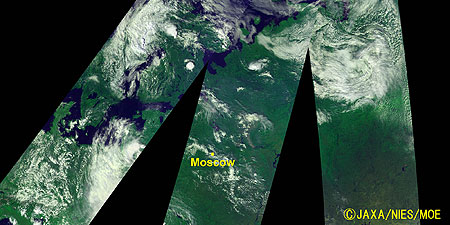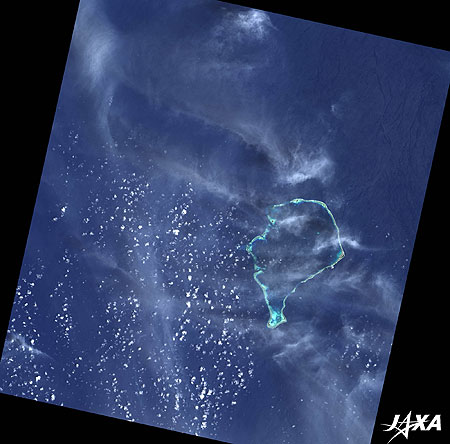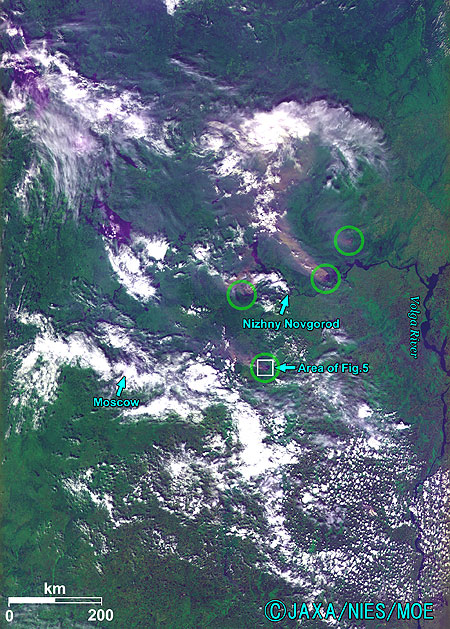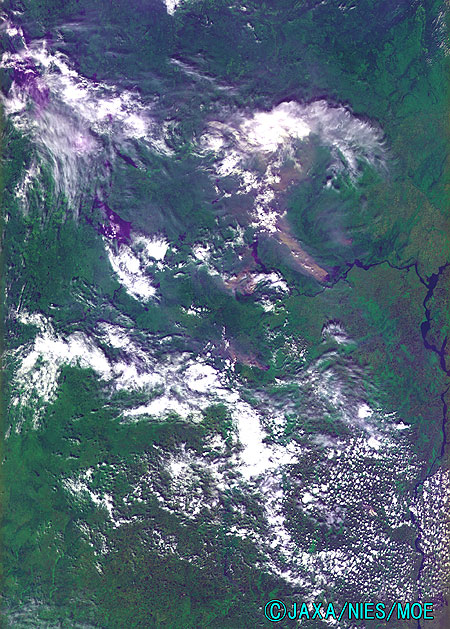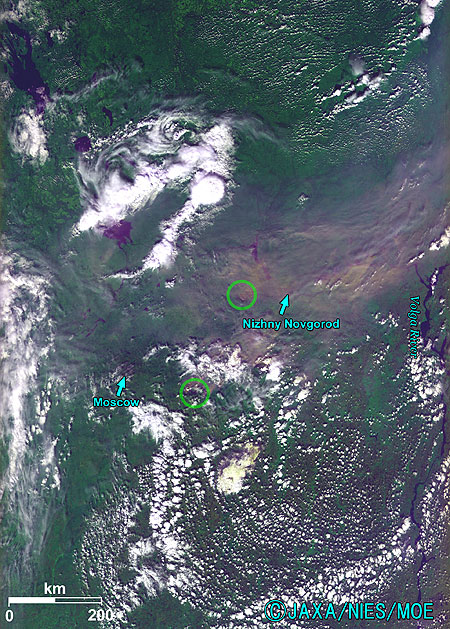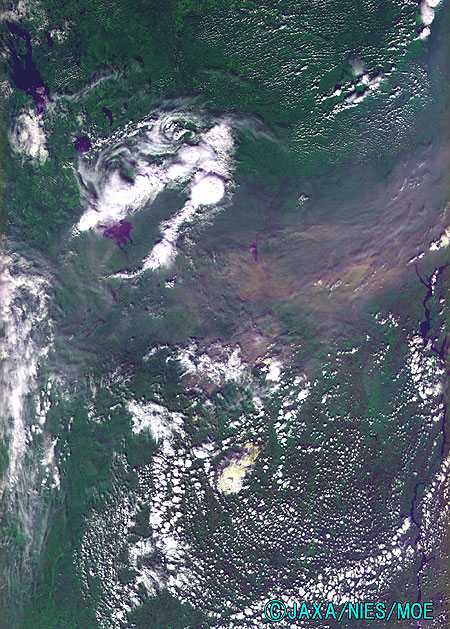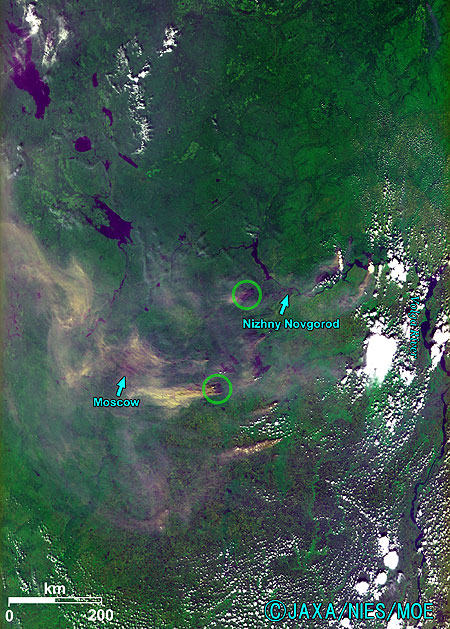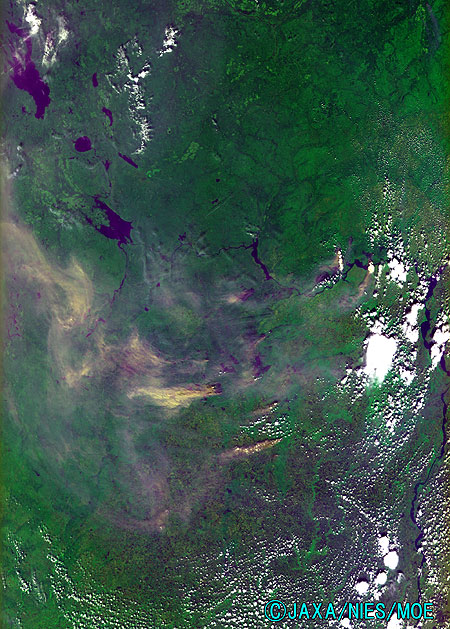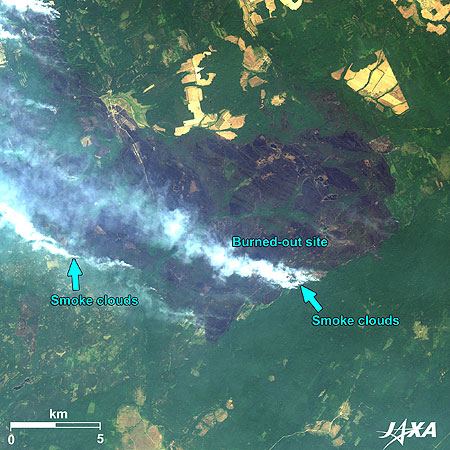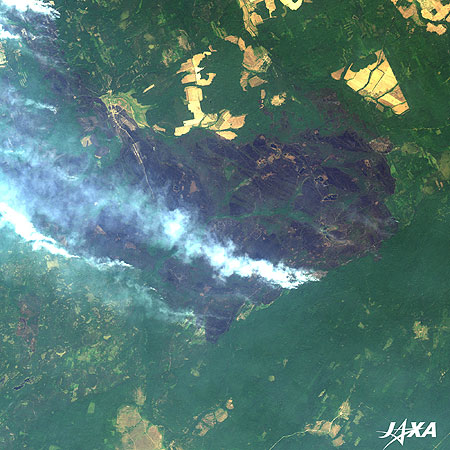Seen from Space 2010
Forest Fires in Western and Central Russia under an Exceptional Heat Wave
|
Fig. 1. Western and Central Russia on July 27, 2010
Figure 1 is an image of western and central Russia as observed by GOSAT (“Ibuki”) on July 24, 2010. Forests (dark green), grasslands, and croplands (light green) cover extensively the entire surface of the land. White shapes in the image are clouds.
Fig. 2. Enlarged Image Around Moscow on July 27, 2010
Fig. 3. Enlarged Image Around Moscow on August 2, 2010
Fig. 4. Enlarged Image Around Moscow on August 8, 2010
Figures 2 to 4 are enlarged images around Moscow as observed on July 27, August 2, and August 8. Forest fires are marked by green circles. Figure 2 shows forest fires near Nizhniy Novgorod and smoke flowing northwest. The white shapes are clouds and the streams of light brown or yellow are smoke from the fire. Figure 3 on August 2 shows the smoke from a big fire covering the city of Nizhniy Novgorod. Six days later, on August 8, the smoke reached Moscow (See Figure 4). Fig. 5. Forest Fires in the South of Nizhniy Novgorod
Forest Fires in Russia (kmz, 4.40 MB, Low Resolution) as seen on Google Earth Figure 5 shows forest fires in the south of Nizhniy Novgorod as observed by ALOS (”Daichi”) on July 28, 2010. The green areas of the image are forests, grasslands, and croplands. The dark portion in the center of the image is the burned-out site. Smoke clouds are rising from the southeast and southwest of the image. Forests are still ablaze in these areas. Explanation of the Images:
TANSO-CAI is a remote sensor for observing clouds and aerosol and detecting error sources to determine the amount of greenhouse gases. TANSO-CAI has four observation bands. Figures 1 to 4 are produced by assigning red to Band 2 (664 to 684 nm), green to Band 3 (860 to 880 nm), and blue to Band 1 (370 to 390 nm). The resulting images have natural coloring as if seen by the naked eye. The following colors designate ground objects:
AVNIR-2 has four observation bands. The color composite images are usually produced by assigning red to Band 3 (610 to 690 nm), green to Band 2 (520 to 600 nm), and blue to Band 1 (420 to 500 nm). The resulting images have natural coloring as if seen by the naked eye. |
